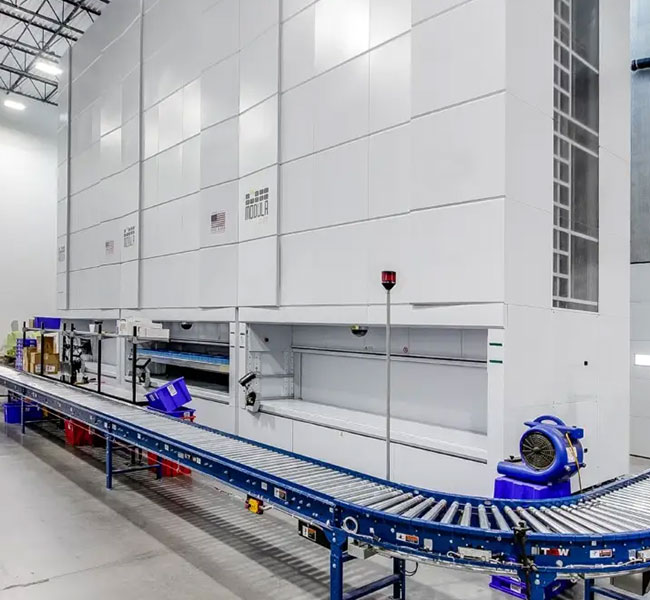The automated warehouse is an important part of the rapid development of modern logistics systems which is usually build with carousels. It has the advantages of saving space, reducing labor intensity, eliminating errors, improving the level of warehouse automation and management, improving the quality of management and operators, and reducing storage and transportation losses. Automated warehouse is effective with many advantages such as reducing costs and improving logistics efficiency. So, what is the process of the automated warehouse?

1. Work flow of warehousing
When the cargo unit is in the warehouse, it is transported by the conveyor system to the warehouse. The cargo is scanned and read by the barcode recognition system. The information carried by the barcode label is read by the person and passed to the central server. The control system judges whether or not according to the information returned by the central server When the warehouse and cargo location coordinates can be determined, the warehousing instruction including the cargo location coordinates is sent to the execution system, and the stacker will store the goods in the designated cargo compartment through automatic addressing. After completing the man-warehouse operation, the stacker returns the job completion information to the control system and waits for the next job command. The control system also returns the job completion information to the central server database for human database management.
2. Outgoing operation process
After receiving the production or customer demand information, the administrator will input the goods information into the outbound order of the upper management machine according to the requirements. The central server will automatically perform inventory inquiries and will be out of the warehouse according to the first-in-first-out, even outgoing, and nearest outgoing. The outgoing operation is generated based on the principle of waiting and transmitted to the terminal control system. The control system arranges the operation sequence of the stacker according to the current outgoing operation and the stacker status and sends the arranged operation commands to the corresponding stacker one by one. The stacker arrives at the designated cargo space, takes out the goods and places them on the laneway outbound platform, and returns the job completion information to the control system, and waits for the next job. The monitoring system feeds back the complete information of the goods out of the warehouse to the central server system, and the management system updates the goods information and the occupancy status of the goods in the inventory database to complete the outbound management. If all the goods on a certain cargo space are out of the warehouse, the cargo record will be cleared from the cargo space occupancy table, and the cargo space occupancy mark will be cleared.
3. Picking workflow
When the cargo unit is picked out of the warehouse, the stacker will take the goods out to the designated address and place them on the laneway outbound platform. After the automatic guided vehicle picks up the goods, the goods will be sent to the sorting table, where the staff or automatic sorting is performed on the sorting table. The equipment is sorted according to the outbound order. After the sorting is completed, the automatic guided vehicle will be sent back to the entrance of the laneway, and the goods will be transported by the stacker to the warehouse or directly out of the warehouse.